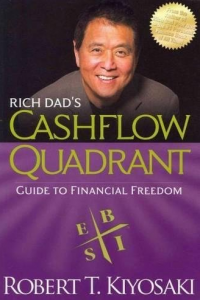It’s amazing how many younger Passive Investors Circle members begin pursuing financial independence (FI) shortly after completing their training.
I first learned about the financial independence/retire early or FIRE community after 10 years of practicing as a periodontist. Honestly, the concept of financial independence had never occurred to me.
I thought there was no other option but to invest for the long haul (with or without a financial advisor) and hopefully NOT run out of money during retirement.
So you can imagine the first time I’d heard about this FIRE movement, my BS radar was on full alert.
It reminded me of those old, late night TV infomercials pitching how you can become a millionaire investing in real estate with NO MONEY DOWN. (Yeah right)
But one thing I noted was the more I learned this FI concept, the more I understood that it could be possible.
People in their 30s and 40s were leaving the traditional workforce to pursue their passions, work part-time or completely retire.
My learning involved finding topics about financial independence by:
- listening to podcasts
- reading books and blog posts
- watching YouTube videos
After realizing this FI concept was possible, it seemed the first step was to figure my financial independence number or FI number.
In other words, how much did I need to have to be financially free?
Some of those that had already joined the FI community weren’t even earning six-figures or had received a windfall such as an inheritance.
During my self-education process, it seemed as if every person’s FIRE journey was different.
Some got there in 10 years or less where as for others, the trip took much longer.
This made me realize that I didn’t have to dig around in people’s mouths until I was 65 (unless I wanted to). Retiring in my 40s or 50s didn’t seem like such an unreasonable idea anymore.
In order to get there faster, some things had to take place.
But before we get into those, let’s first define what exactly financial independence entails.
Want some inspiration? Check out the 37 Motivational Financial Freedom Quotes
Don’t Miss Any Updates. Each week I’ll send you advice on how to reach financial independence with passive income from real estate.
Sign up for my newsletterWhat Does Financial Independence Mean To You?
What does financial independence mean to you?
Is it:
- Having enough money to last the next 30+ years?
- Obtaining a high-income job ?
- Based on an anticipated inheritance or other windfall?
Unfortunately some people think that FI means, “I’m going to work until I’m 65 and then I’ll retire.”
Unfortunately, none of these are good definitions.
Let’s break each down:
If you tend to try to save enough to live on until you die, what happens if you run out of money? Or inflation significantly rises causing your lifetime savings to plummet?
Even if you’re in a high paying career, no job is secure. Look at what the 2020 pandemic did to the economy; even doctors lost their jobs!
What if you’re waiting on an inheritance? Living your life hoping someone else will take care of you won’t help you answer what FI is really about.
Rich Dad Poor Dad FI Exercise
Rich Dad Poor Dad and Cashflow Quadrant author, Robert Kiyosaki, has a simple exercise he instructs his live audiences to do in order to understand they’re not financially independent even if they have a high annual income.
He gets them to take out a piece of paper and make two columns.
In the left column, they write down how much money they make each month.
In the right column, they write down their monthly current expenses.
Next, he has them cover the left column with their hand and pretend they’re no longer making money and asks them, “How does the column on the right make you feel?”
Kiyosaki states that most that go through this exercise realize they’re depending on one income source to provide all of their monthly expenses and are no where near reaching FI.
What Is Financial Independence?
I scoured the internet to find a good definition for financial independence and one of the best was also from Kiyosaki.
He created a 3-step formula in order to personally achieve FI:
- Buy assets that generate cash flow (i.e. rental properties)
- Use the passive income from the assets to pay for living expenses
- Once monthly cash flow from assets is equal to or greater than monthly living expenses, you’re financially independent.
Once you reach step #3, you NO LONGER have to work for money (unless you want to).
Others state that FI is achieved by:
- building enough passive income to cover annual expenses, or
- amassing a large enough nest egg of savings and investments (i.e. mix of stocks and mutual funds) to cover living expenses through withdrawals, or
- a combination of #1 and #2.
Your FI number is that target lump sum/nest egg that tells you how much money you’ll need to become financially independent.
Most information out there describes how to calculate this number by focusing on using the traditional “accumulation” method which typically takes MUCH longer versus how Kiyosaki and other real estate investors operate.
We’ll discuss both today and then you can choose which route is best for you.
Origins Of The FI Number
The FI number concept originated in the 90s after three professors at Trinity University published work regarding retirement; specifically the safe withdrawal rate.
They evaluated stock and bond data during a 30 year period from 1925-1975. Their research showed that anytime during that time period, a retiree could safely withdraw 4% of their total assets annually without running out of money.
The Study’s conclusion is the basis for the 4% rule of thumb which is used to calculate the FI number.
3 Steps To Calculate Your FI Number
Step #1 – Calculate your spending
The first step in finding your FI number is calculating how much money your household currently spends.
If you don’t have a detailed budget then take a look at what you spent the last month and multiply that number by 12 to calculate your annual spending.
Once you have this number, it’s time to move on to the next step.
Step #2 – Pick your withdrawal rate
Your withdrawal rate is exactly what it sounds like… How much money you plan to take out of your accounts each year to live on.
If you plan on following the Trinity Study’s findings like most do, then choose 4% as your safe withdrawal rate (SWR) to avoid running out of money during retirement. (Remember, this is based on a 30 year retirement span).
What if you want early retirement lasting longer than the 30 year time frame? If this is the case, then you may have to consider a lower SWR. This is where I have an issue. If I’m going to do all I can to retire early, I don’t want to live like a miser.
Why work hard to retire like a monk? No thanks!
Step #3 – Find your FI number
Now that you have your annual expenses and safe withdrawal rate, it’s time to find your FI number.
FI Number = Annual spending/SWR
If Dr. RE is currently spending $100,000 annually and chooses to retire earlier than 65 with a 3.5% SWR, his FI number calculation would look like this:
His FI Number = $100,000 / 3.5% = $2.85 million
If he would have chosen the traditional 4% SWR, it would have changed to:
FI Number = $100,000 / 4% = $2.5 million instead
My Thoughts
To me, if you plan on approaching retirement focused on a “target” lump sum to draw down with hopes of not running out until you die, then it seems as if it would force us to choose to obtaining a scarcity mindset.
Related article: Scarcity vs Abundance Mindset – Which Do You Have?
I don’t know about you but during retirement, I’m planning on enjoying myself using cash flow from assets that I’ve investing in during my working years.
Personally, I think this is both the easiest way and best way to think about investing for early retirement.
Here’s my approach:
- Calculate your monthly expenses
- Invest in passive real estate that cash flows
- Once your passive income can cover the monthly expenses, you’re set!
Let’s run a few numbers for our endodontist friend, Dr. DC. His household typically spends $17K/month or $204,000 a year.
When he moved to town, his financial advisor told him that due to the uncertainty in the market and inflation, he’s looking at needing at least $10 million to retire.
That number didn’t sit too well with him but he didn’t feel as if he had much of a choice.
Then one day he came across this site, some Debt Free Dr guy :), and he learned that there WAS a DIFFERENT way to approach retirement and he didn’t need anywhere close to $10 million to retire.
After running a few of his calculations he learned from his site, he figured he only needed about $3 million investing in passive real estate syndications paying a conservative 7% annual return.
At a 7% cash flow rate, $3 million would produce $210,000 per year virtually tax free due to the magic of something called depreciation.
Could you live off of $210,000 tax-free?
Passive Investors Circle
If you want to learn how to reach FI much quicker than you thought possible, join the Passive Investors Circle today.
Join the Passive Investors Circle





